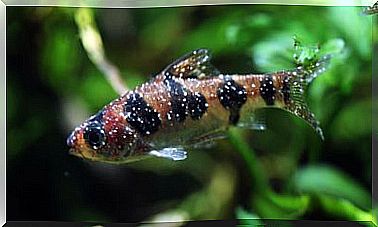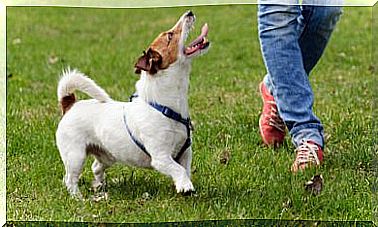The Domestic Breeding Of The Pheasant
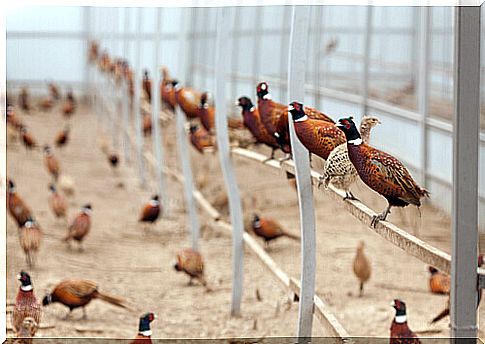
The pheasant is a species of bird native to Asia. Many years ago, this was one of the favorite birds for hunting. Over time, this animal has been gaining popularity for being an important gastronomic dish. That is why today the domestic pheasant breeding is very common.
After these birds left Asia and spread around the world, pheasants were in danger of extinction. It was thanks to mixing with other breeds in other countries of the world that pheasants managed to survive. And it is precisely because of that mixture that there are a large number of types of pheasant.
Pheasant characteristics
Physically, the pheasant is a bird that is characterized by being of medium height, by its colorful plumage and by the length of its tail. The head is proportionally smaller than the rest of the body.
Pheasants can measure between 60 and 90 centimeters, while the wings can be between 70 and 90 centimeters long. The weight of pheasants is between 500 grams – when they are small – up to three kilos when they are adults. On average, the male always weighs more than the female.
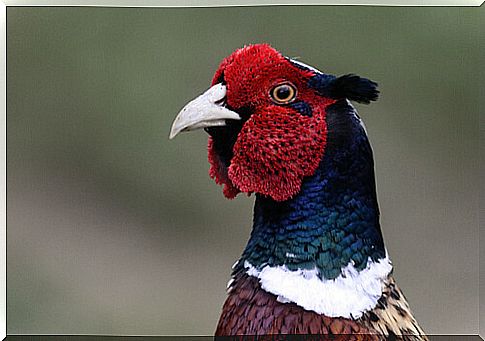
Pheasant diversity
When the common pheasant left Asia and mixed with other bird species, 30 pheasant subspecies emerged. These differ, mainly, by the plumage and by the intensity of their colors; They also differ in that certain types only inhabit certain places and countries.
Domestic pheasant breeding
Territoriality
The wild pheasant resides in grasslands, forests, and fields. It is a bird that is used to living in very wide spaces where it can enjoy free flight. That is why, when raising them, it is necessary that they be guaranteed a wide territory in which they can feel comfortable.
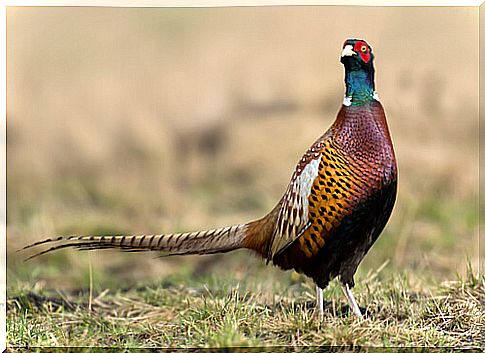
Domestic breeding experts assure that each bird must have two square meters. It is very important to consider this fact, especially if the animal will be raised in large quantities. Pheasants like to hide and sleep in trees, so the best environment to raise them would be in a caged area, but with natural cultivation.
Feeding
These birds feed on plant and animal organisms. Among other things, they eat seeds, nuts, leaves, lizards, snakes, and some small animals. Breeders often feed them industrial products for turkeys or chickens.
Know the stages of the pheasant
It should be noted that when pheasants are in their pigeon stage, they must be given very meticulous care, since they do not control their temperature.
- The first stage is the hot one. After hatching and up to the first 60 days, pheasants should be placed under infrared hoods at high temperatures, approximately 35 to 40 ºC.
- The second stage is the cold. The birds begin to know the temperature of the outside world and now they sleep in beds formed with shavings or sawdust.
- The third stage is the exterior. Once these birds are at least 150 days old, they are once left in the cages at their natural temperature.
Machinery
For pheasant breeding it is vital to have the appropriate machinery, especially for when the birds are still chicks. If the reason for breeding is to market the eggs or birds, it is necessary to have incubators. Other very useful elements can be the spacious outdoor cages and infrared hoods.
Utility of parenting
Currently, people raise this type of poultry for the sale of what is a highly requested meat in luxury restaurants around the world, although another reason is for the sale of their eggs. There are entrepreneurs who also breed them and then sell them to hunting businesses ; and we cannot forget those who prefer these birds as pets.





